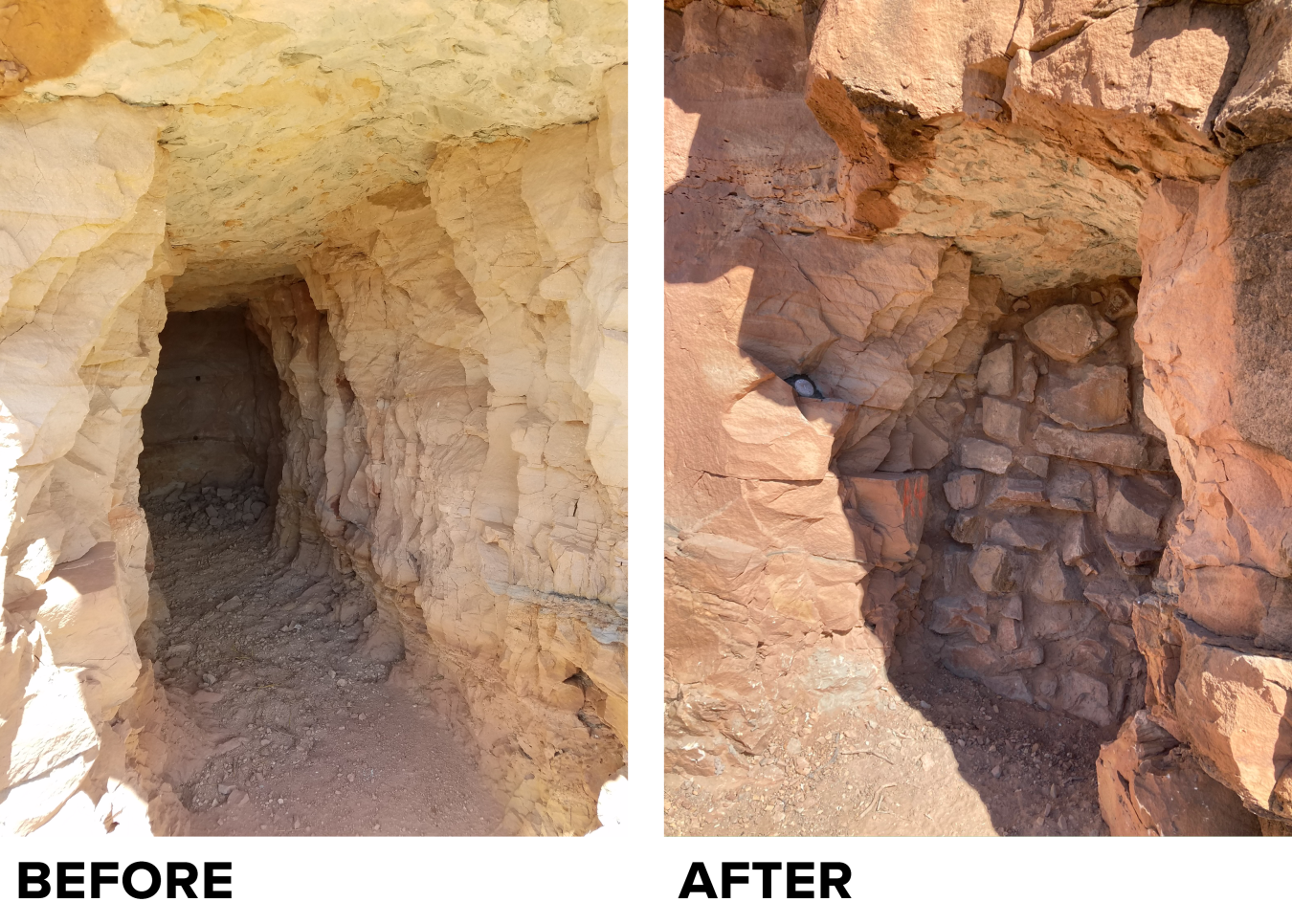DRUM completes 1,000th mine report and contributes to safer public lands.
December 15, 2020The U.S. Department of Energy (DOE) Office of Legacy Management (LM) Defense-Related Uranium Mines (DRUM) Program passed two major milestones in October, when DRUM completed its 1,000th final verification and validation (V&V) report and DRUM data was used to safeguard mine hazards.
The DRUM Program is a partnership between DOE, federal land management agencies, and state abandoned mine lands programs to assess the locations and conditions of abandoned mines that provided uranium ore to the federal government for defense-related activities between 1947 and 1970.
“The DRUM program completed a major milestone in publishing its 1,000th mine-specific V&V report,” said Jay Glascock, who manages LM’s uranium-related programs. “The honor goes to the Blue Ribbon 3 mine, which is appropriately named in this instance.”
The Blue Ribbon 3 mine is located in Colorado’s Gateway Mining District on land managed by the U.S. Bureau of Land Management (BLM) Grand Junction Field Office.
In another milestone, V&V reports proved their worth in October with completion of the first DRUM safeguarding project in the state of Colorado. Applying V&V data, the BLM’s Uncompahgre Field Office worked with the Colorado Division of Reclamation, Mining and Safety to safeguard 26 hazardous mine entries. As part of the Long Park pilot project, each safeguarded mine entry was tagged with a small monument with an identification number that can be traced back to the DRUM database.
The V&V evaluation process was launched in 2017. Verification involves the comprehensive research of historical records to identify DRUM sites and to pin down their locations. Once verification is complete, validation begins. Field teams document the features and condition of each mine through photographs, gamma surveys, soil and water sampling, and ecologic assessments. Technical writers compile the data and develop reports that provide rankings of physical safety hazards and potential risks to human health and the environment. The information is presented in the final V&V reports, which provide LM’s partner agencies with valuable information for addressing risks posed by abandoned mines on the public lands they manage.
“Our goal is to provide our partner agencies with information that they can use to advance mine safeguarding, in order to protect people and the environment from features that present potential risks to the general public,” said John Zutman, who manages DRUM reports for the LM Strategic Partner contractor. “The V&V process serves as a general inventory of mines to determine which mines can be removed from further consideration and which mine features need to be safeguarded.”
Mine-specific V&V reports are key for developing safeguarding projects to address hazardous mine features. “We work with our partner agencies as one team to accomplish these projects,” said Chuck Denton, who manages the DRUM safeguarding program. “It is truly a team effort with one partner funding the project, another preparing the environmental documentation, and another executing the design and construction.”

This before-and-after photo shows safeguarding at the Peggy Mine in Colorado, part of the Long Park pilot project. Rocks collected near the mine are mortared together at the mine portal to prevent access to the interior of the mine.

